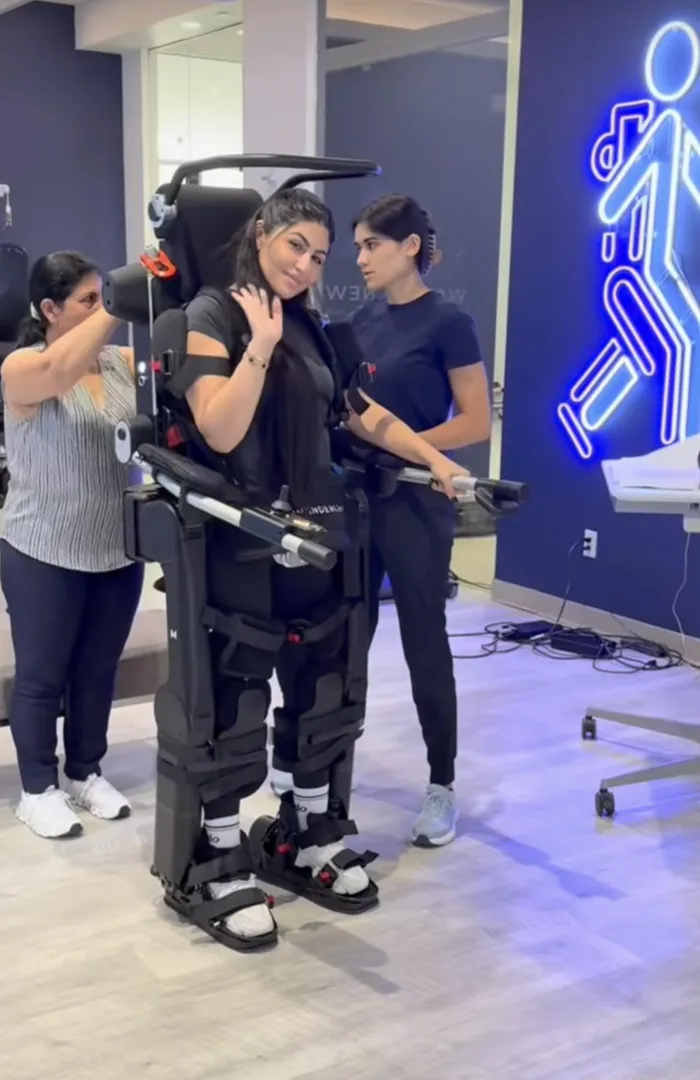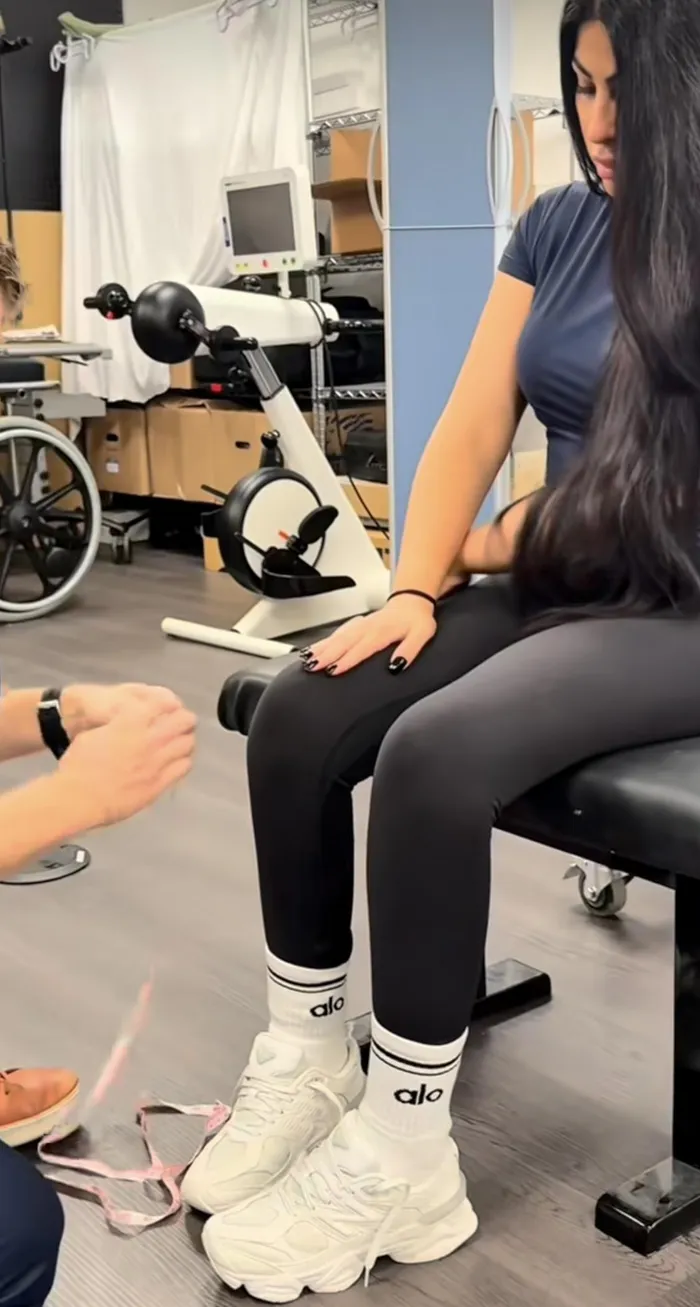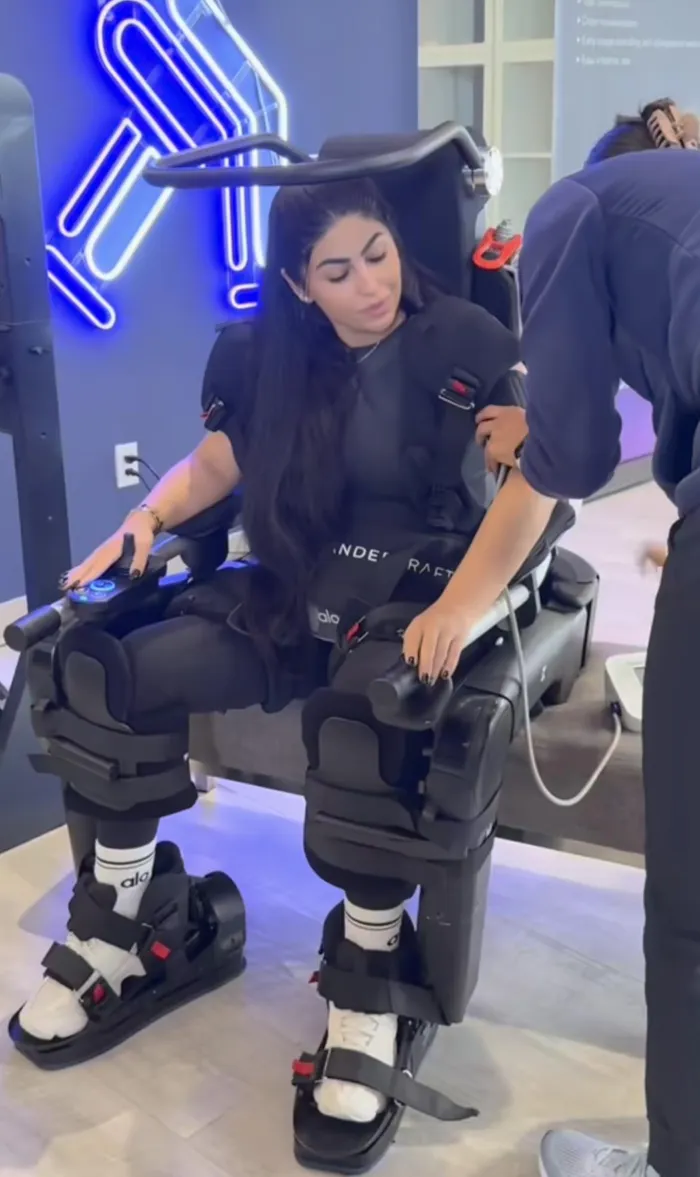
Jessica Tawil walks again after a decade in a wheelchair
Image: TikTok
When 16-year-old Jessica Tawil climbed into a car with friends in 2014, she never imagined she would spend a decade in a wheelchair.
A devastating accident left her with a T6 paraplegic spinal cord injury; her life changed in an instant.
"I can't move! I can't move," she exclaimed.
The chilling realisation that she was paralysed, abandoned by her friends on a deserted road, remains etched in her memory.
She asked, trembling, “Do I have pants on?” as though grounded in the surreal gap between her old life and new reality.
Fast-forward ten years: in a moving video that has touched millions online, Tawil stands upright.
The video of Tawil walking has captivated millions, with over 330 million views on TikTok and another 140 million on Instagram.
In the clip, Tawil’s nervous anticipation melts into unfiltered joy as she takes those first tentative steps. Her story is one of resilience, redemption and the incredible power of technology to restore hope.
Tawil’s achievement was made possible by the Wandercraft Atalante suit, an advanced robotic exoskeleton powered by artificial intelligence (AI).
The exoskeleton boasts built-in sensors, and its AI component interprets residual nerve and muscle signals to sync hip and knee movements, achieving upright walking.
To translate this complex technology into everyday terms, imagine the subtle shifts you make when balancing before taking a step. The exoskeleton performs micro-adjustments like these, adapting to the nuances of your body, making the science behind it feel connected and approachable.
With the high-tech exoskeleton, Tawil took her first steps in a decade. In that moment, she did more than walk; she reclaimed a part of her life.
Her quiet strength is evident in her TikTok video, boasting 330 million views, and over 140 million Instagram shares. These platforms capture the pivotal moment her body regained trust, and the raw emotion she experienced while achieving this alongside her mother.
It is a story of redemption, renewal and technology meeting the human spirit.
Why is this so significant? Because the health implications go far beyond walking. Clinical evidence shows that powered exoskeletons for spinal cord injury (SCI) patients offer improvements in balance, trunk control, circulation, spasticity, and even cardiovascular health.
One meta-analysis found that exoskeleton-robotic training improved walking function more than conventional gait training, especially when the injury is more recent.
Tawil’s story is proof of how robotics and neuroscience are merging to redefine what’s possible for people with mobility challenges. But this technology isn’t just for spinal cord injuries; it’s also being explored for stroke rehabilitation and other conditions impacting mobility.
The now social media influencer describes how she joined the trial for the exoskeleton: Tawil underwent a rigorous body-screening process, had full-body bone density scans, and was precisely fitted for the suit.

Jessica Tawil climbed into a car with friends in 2014, she could never have foreseen the life-altering ordeal that awaited her.
Image: TikTok
“They said they needed 3.5 and I got 3.5 … Honestly, I think one of the most nerve-wracking parts was getting full-body X-rays.” This kind of bespoke fit means the machine meets her body rather than her body contorting to meet a machine.
From a wheelchair to the world’s inspiring woman, Tawil’s journey didn’t stop when she stood.
She shared: “Ten years later, I was able to walk toward my own reflection … that in itself induced motivation to get back into rehab … I believe with the right changes, muscle regeneration can happen … mind dominating matter.”
Her words carry the weight of lived experience: the long years of therapy, the daily grind of maintaining muscle and health in the face of paralysis.
Standing upright gave her permission to reignite a version of herself she thought lost. It’s a reminder that wellness is not only physical mobility: it’s mental, emotional, habitual and sparked by hope.

Jessica Tawil's triumphant steps were made possible by the Wandercraft Atalante suit, an advanced robotic exoskeleton leveraging artificial intelligence (AI)
Image: TikTok
For all of us, even those without SCI, Tawil’s moment is a metaphor. Technology can open doors, but it’s the human response, rehabilitation, mindset, nutrition, and consistency that walk the path.
This young woman’s story also calls attention to the larger movement: merging robotics, neuroscience, and rehabilitation to expand what is possible for mobility and quality of life. Her story has inspired millions online, not just because of its emotional pull but because it’s a reminder of the resilience of the human spirit.
Tawil’s transparency about her journey from the pain of the accident to the rigorous clinical trial process has made her a beacon of hope for others facing similar challenges.
FAST COMPANY
